
Which LED Solution You Should Choose This Year
LED displays are the gold standard for large, impactful, modern spaces – but, within the world of LED solutions, innovation abounds.
The sprawling landscape of display solutions, including microLED, QLED, OLED, transparent OLED and more, can be difficult to navigate without the help of an experienced partner or the knowledge and foresight to understand which of these solutions is the true future of LED, complete with staying power to grow and scale alongside your experiences.
Fixed and creative display technology platforms have been evolving extremely quickly and in more diverse ways over the past five years than ever before.
Let’s take a deeper look into the different solutions that could step up to fill the role of leading display technology and make an effort to determine which is the true future of LED solutions.
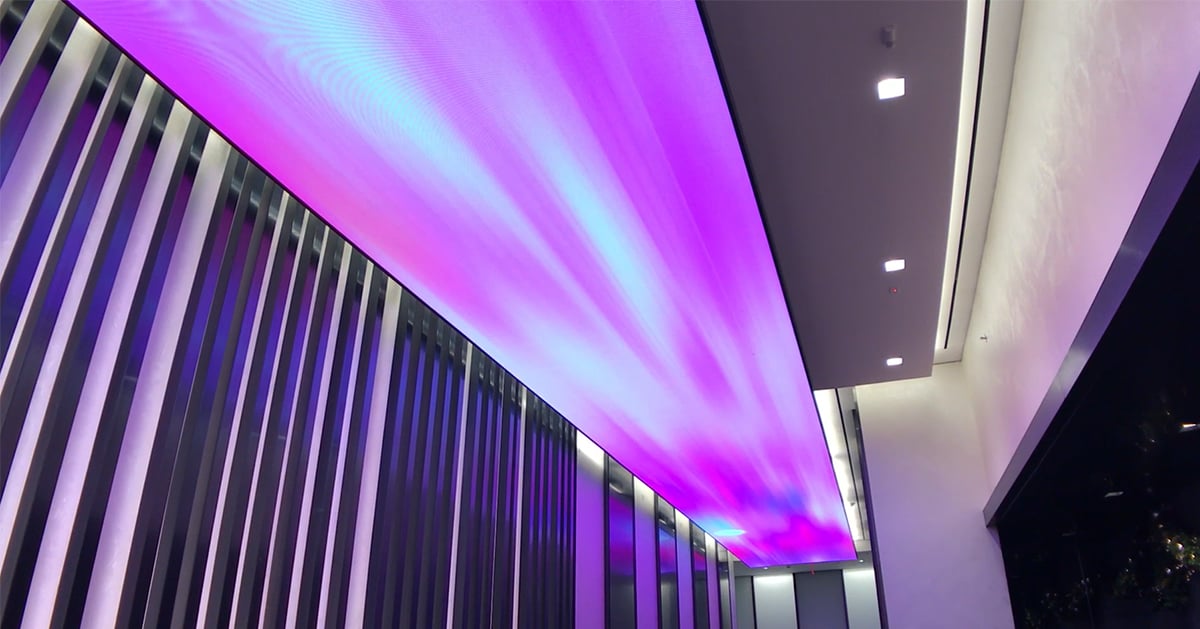
Transparent LCD and Transparent OLED – A Niche Market
Electrosonic Director of Engineering Excellence Yiannis Cabolis has extensive experience in the world of cutting-edge displays and their impact on experiences where we live, work and play, making him a prominent voice in assessing where the market might be headed.
Currently, the market surrounding transparent LCD or OLED solutions is a very niche one. Although there are still demands for these solutions in location-based entertainment, themed entertainment and purpose-built experiential design applications in retail and beyond, day-to-day use is low.
Particularly in education, healthcare, corporate settings and even residential markets, the size of these solutions has remained relatively small, and costs are still high. Deployment is cumbersome, because manufacturers and integrators work to try to hide the driving electronics of these solutions, and impact on viewing angle and experience is significant.
“For these reasons alone, this technology will remain in the service of specific applications and not necessarily see a lot of growth,” Cabolis said. “[Unless new solutions] become larger with better media-mapping abilities, such as the use of media as a window treatment, as a space divider, etc., [it will remain a niche market].”
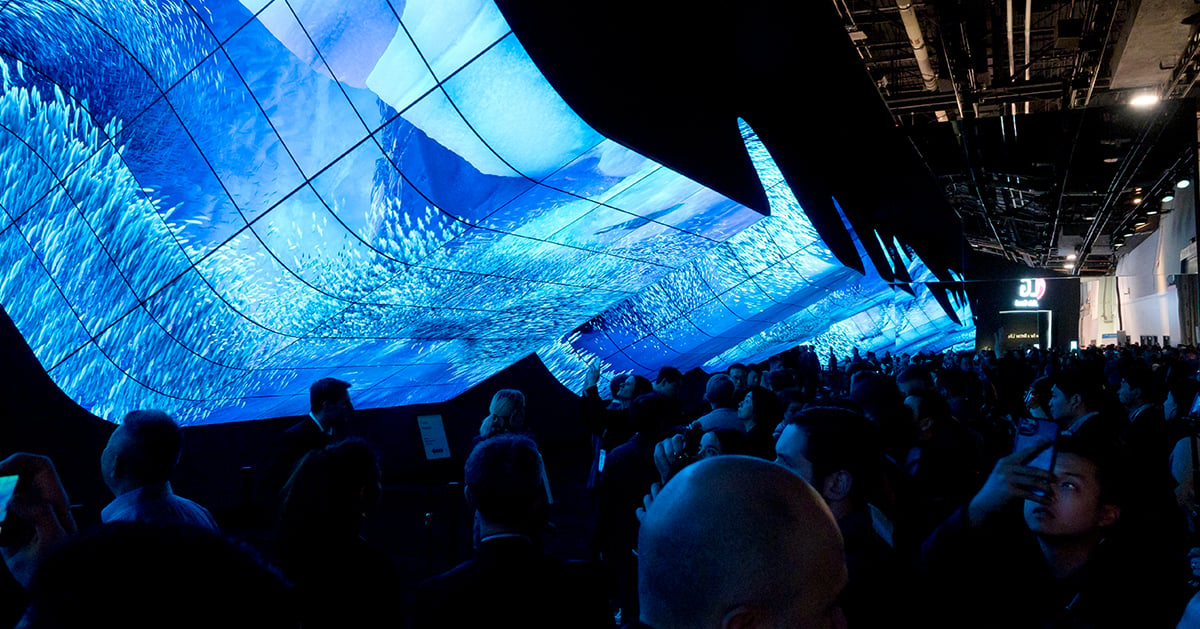
OLED Technology – Maturing, but Not Ideal
OLED, as a technology, has matured, but it is still largely relegated to critical viewing applications where want contrast, color tracking, and wider viewing angles for full-color gamut are necessary.
However, OLED solutions can’t compete in ambient light or when displaying static images. Further, OLED production remains expensive and with its own restrictions – though slight curvature is possible, it’s still not a go-to technology for large applications and array formats, such as media walls.
“Sizes will continue to hover around what is available today until some of the shortcomings inherent to the technology have a reason and the finance to evolve,” Cabolis said.
In short, that means OLED is also not the forward-looking, scalable LED technology the industry is looking for.
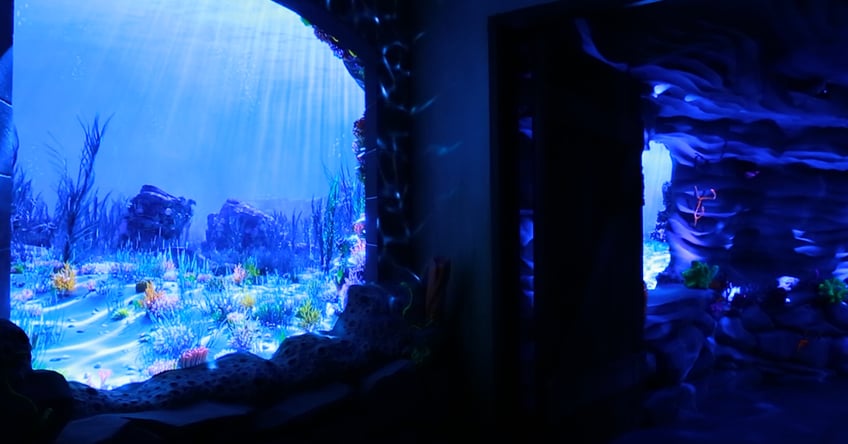
QLED Fits Applications where OLED Falls Short – But with Sacrifices
QLED, which stands for quantum light-emitting diode in comparison to OLED’s organic light-emitting diode, has proven to be a fit in all areas in which OLED falls short.
QLED solutions use tiny nanoparticles called quantum dots to deliver elevated brightness and color, and this empowers it to succeed in place of OLED, particularly in applications when ambient light is present or viewing angles need to be wider.
It’s also rather cost-effective, giving it a further advantage. All in all, it’s a solid choice – but it does not, however, come in a transparent version. QLED usage is dictated by the system design and desired performance functionality, and it still doesn’t quite measure up to the role of “next big thing” in LED displays.
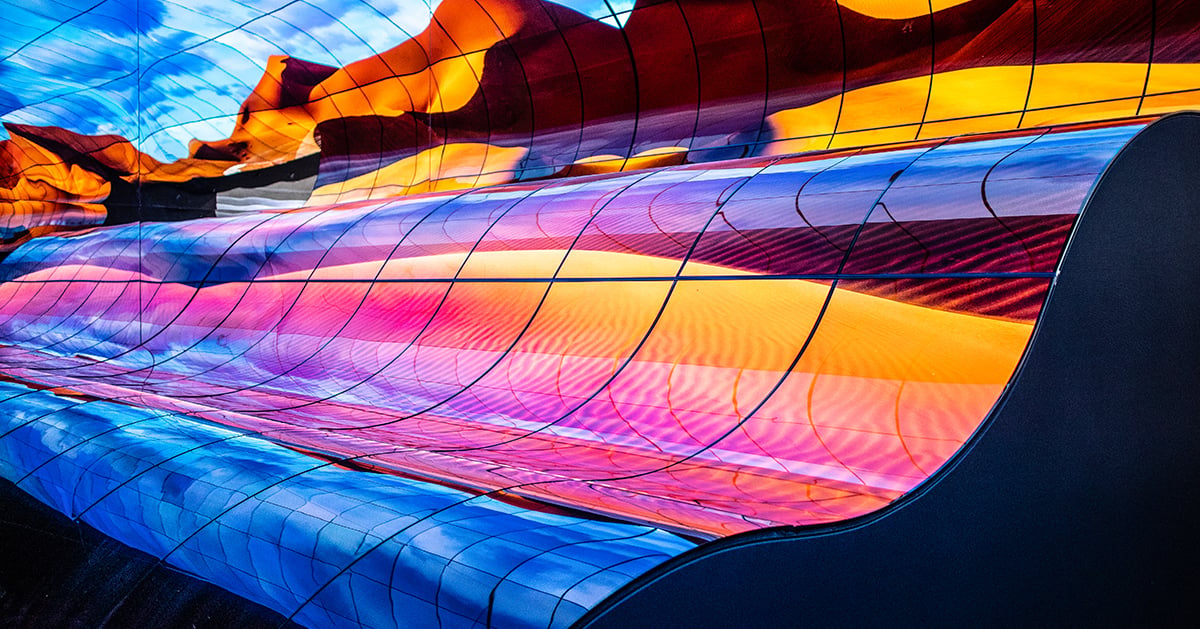
The Standard-Bearer as LED Solutions Continue to Evolve – microLED
MicroLED is the latest development in fixed-display technology.
“I mention ‘fixed-display’ because the term ‘LED’ has been used over the years to identify everything from the backlight of an LCD display to an LED-tile or media-mesh, creating confusion,” Cabolis said.
MicroLED is, for now, the most advanced fixed-display solution for embracing and combining all that is good about OLED and QLED technology, but without the transparent portion.
MicroLED solutions utilize millions of tiny, individually addressable diodes that create the image, themselves. While producing and elevating the technology comes with challenges in engineering, the technology has tremendous potential to deliver better image size, contrast, refresh rate, black levels, resolution, brightness and production cost than any other LED technology ever has.
MicroLED certainly appears to be the future of LED technology, particularly as the technology receives key innovations that work to drive costs down, streamline production, and take the technology to new heights in terms of size and function.
Still, for the time being, Cabolis said true innovation will come from a willingness to look at each individual experience and determine which combination of LED solutions will bring it to life.
“You would ask me, though, ‘Wait a minute – what about larger-than-life, immersive, flexible, contouring and fit-to-form approaches?’,” Cabolis said. “’What about delivering on an experience focus and content-friendly solutions, capable of embracing other technology platforms, such as mixed reality, remote monitored and managed solutions, and more?’”
“The answer to that question is every one of them. We drive cars with heads-up displays with projected and reflective technology, media and instrumentation clusters with LED solutions, engine management systems with end-user GUIs, and so on. … Similarly, when we talk about how we trigger our iconic memory to create lasting experiences, we need to incorporate – like craftsmen – many different tools and technologies.”
The role of an expert integrator like Electrosonic is to help technologies coexist and fulfill creative design intent, driving experiences that leverage a suite of solutions to leave a lasting impact.
To learn more about Electrosonic’s commitment to living on the cutting edge of experiential technology, contact us today.
Yiannis Cabolis
Yiannis Cabolis, Director of Technology Innovation at Electrosonic, shares the inside track on how technology drives innovation. He brings 30 years’ experience monitoring emerging technologies, developing best practices and driving Research and Development to solve challenges and help clients understand how to benefit from the latest engineered technology solutions.










.jpg?width=1500&height=995&name=ELC501_N17_medium%20(1).jpg)



.jpg)

.jpg)



















.jpg)




.jpg)
-png.png)












.jpg)





.jpg)


-(1)_1200x629px.jpg)




.jpg)
.jpg)





-RR.jpg)






.png)




.jpg)






.png)


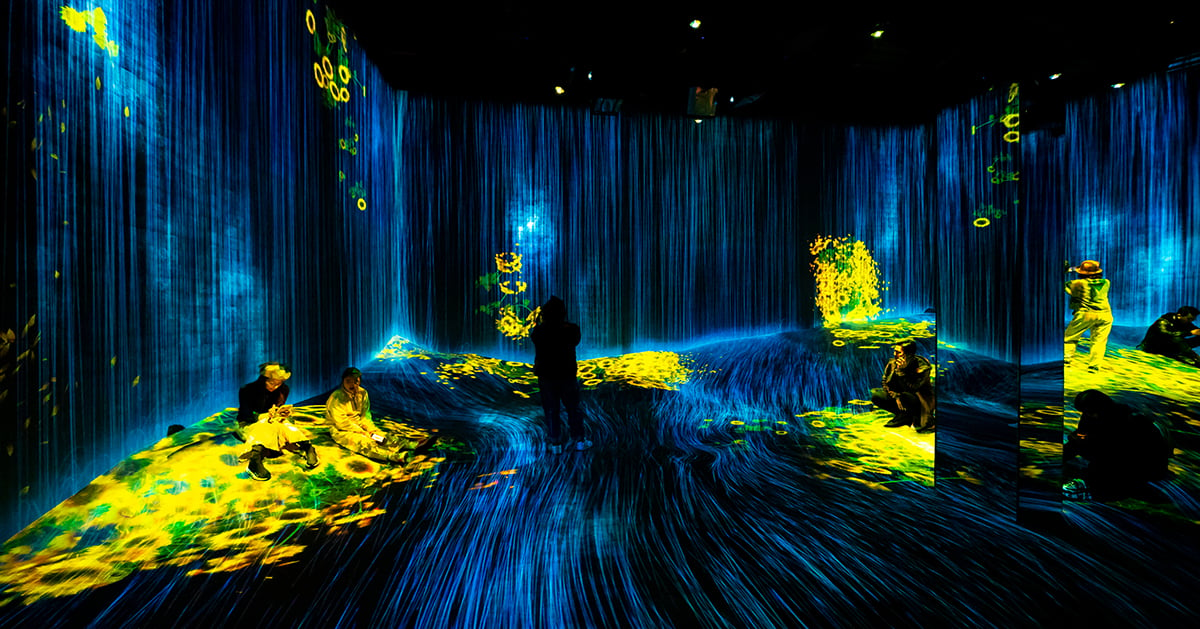


















%20(1)-es.jpg)
.jpg)








.jpg)

.jpg)





.jpg)



.jpg)















.png)

.png)





























.jpg)
.png)





.png)

.jpg)


.png)






.jpg)
.jpg)


